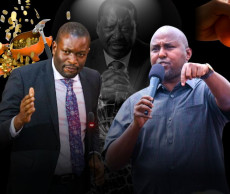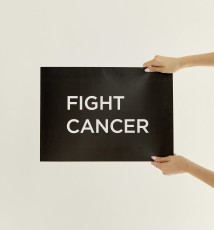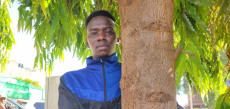- This crucial training took place from September 10 to 11 in Naivasha, focusing on assessing risks and ensuring safety both online and offline, particularly against abuse targeted at women in media.
The Kenya National Commission for UNESCO (KNATCOM), through its Communication and Information Programme, is taking significant steps to promote the safeguarding of journalists and ensure the free flow of ideas. By documenting safety challenges and supporting protection initiatives, KNATCOM collaborates with media stakeholders to enhance the well-being of journalists across the nation.
Recently, KNATCOM, in partnership with the German National Commission for UNESCO, organized a two-day training session aimed specifically at female journalists from Nakuru County and its surroundings. This crucial training took place from September 10 to 11 in Naivasha, focusing on assessing risks and ensuring safety both online and offline, particularly against abuse targeted at women in media.
The training featured experts from KNATCOM, the Media Council of Kenya (MCK), the Kenya Union of Journalists (KUJ), and the Association of Media Women in Kenya (AMWIK), who shared their insights and expertise on journalistic safety. Participants engaged in discussions about the opportunities and challenges presented by digital platforms, with a focus on their impact on women in the media.
Victor Bwire, the Deputy Chief Executive Officer and Programmes Manager at the Media Council of Kenya, emphasized the legal protections available to journalists. “As long as you are in the line of duty, there are privileges under the Geneva Convention and UNESCO,” he said. He urged the journalists not to view law enforcement or politicians as doing those favors, but rather to understand the legal framework that protects them.
Bwire also highlighted the crucial link between media freedom and other rights, stating, “Access to information and freedom of expression extend to media freedom, which is essential for realizing other rights.” He noted that while Kenya has protective articles for journalists, there are also 21 laws that counteract these protections.
Read More
He underscored the importance of individual responsibility in ensuring safety, saying, “Safety starts with you; security is what the state can provide.” Bwire urged journalists to familiarize themselves with the constitution to avoid becoming obsolete.
Ibrahim Oduor, the Head of Media Legal Support Unit at the Kenya Union of Journalists (KUJ), echoed these sentiments, discussing the tangible threats journalists face for their work. “Many have been targeted for what they’ve published, or due to public perception,” he noted, calling for collaboration among journalists and other sectors to protect media freedom.
Oduor insisted that media houses should adopt fair editorial policies to ensure that their reporting does not infringe on others’ rights. He also stressed the importance of police support in crisis situations, particularly when journalists face threats or robbery.
“It’s vital for journalists to belong to associations,” he added. “This ensures that there’s oversight in case of legal troubles.” He emphasized the need to balance publicity with the safety of individuals involved in stories, asserting that sometimes public interest can drive action.
As the training concluded, participants faced a profound question: Should journalists succumb to the fear of risks or confront them head-on? Oduor urged unity among journalists, stating, “Any harm against one journalist is harm against all journalists.”
He stated that KUJ is committed to ensuring justice for members, actively following up on legal proceedings and offering support in cases of injustice. “We consistently write to IPOA to monitor progress and, if necessary, we escalate matters to the constitutional court,” Oduor stated.
This training marks a pivotal moment for female journalists in Kenya, equipping them with the tools and knowledge to navigate the complexities of their profession while fostering a safer environment for all.











